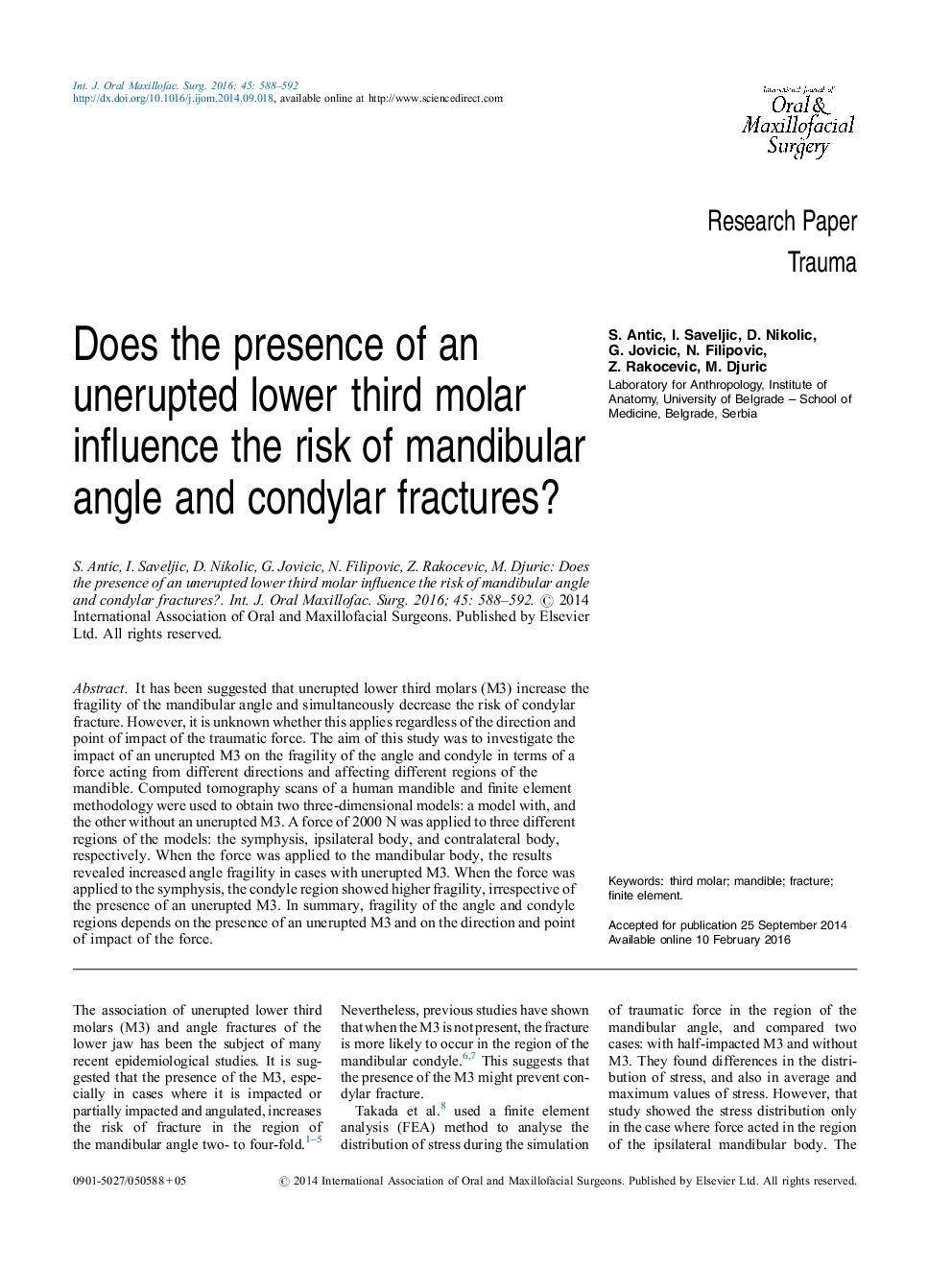| Article ID | Journal | Published Year | Pages | File Type |
|---|---|---|---|---|
| 3131936 | International Journal of Oral and Maxillofacial Surgery | 2016 | 5 Pages |
It has been suggested that unerupted lower third molars (M3) increase the fragility of the mandibular angle and simultaneously decrease the risk of condylar fracture. However, it is unknown whether this applies regardless of the direction and point of impact of the traumatic force. The aim of this study was to investigate the impact of an unerupted M3 on the fragility of the angle and condyle in terms of a force acting from different directions and affecting different regions of the mandible. Computed tomography scans of a human mandible and finite element methodology were used to obtain two three-dimensional models: a model with, and the other without an unerupted M3. A force of 2000 N was applied to three different regions of the models: the symphysis, ipsilateral body, and contralateral body, respectively. When the force was applied to the mandibular body, the results revealed increased angle fragility in cases with unerupted M3. When the force was applied to the symphysis, the condyle region showed higher fragility, irrespective of the presence of an unerupted M3. In summary, fragility of the angle and condyle regions depends on the presence of an unerupted M3 and on the direction and point of impact of the force.
